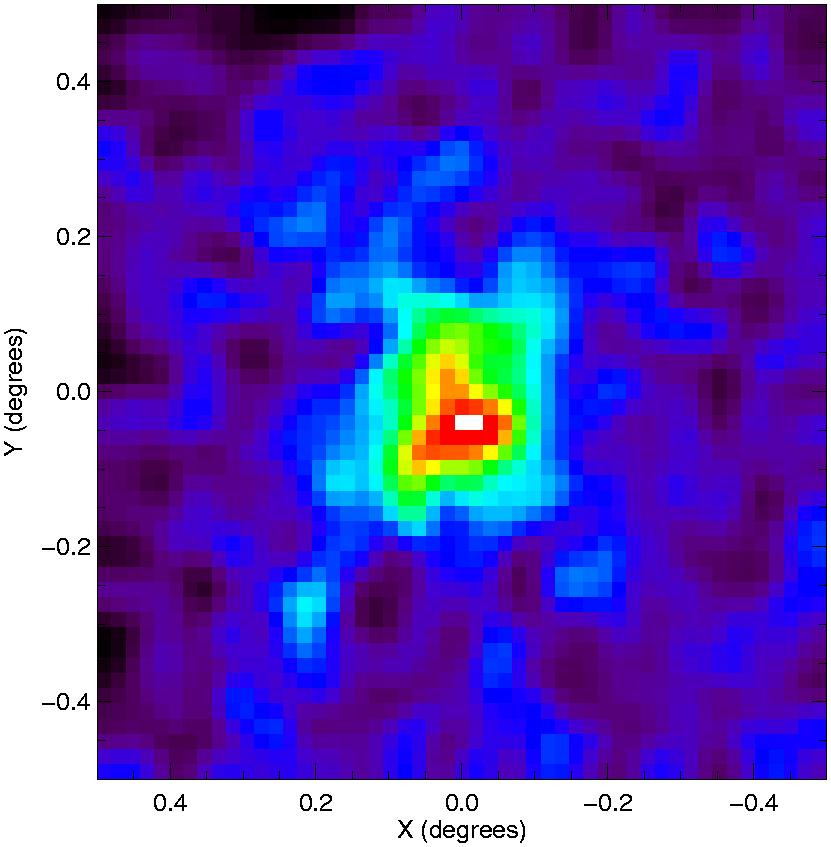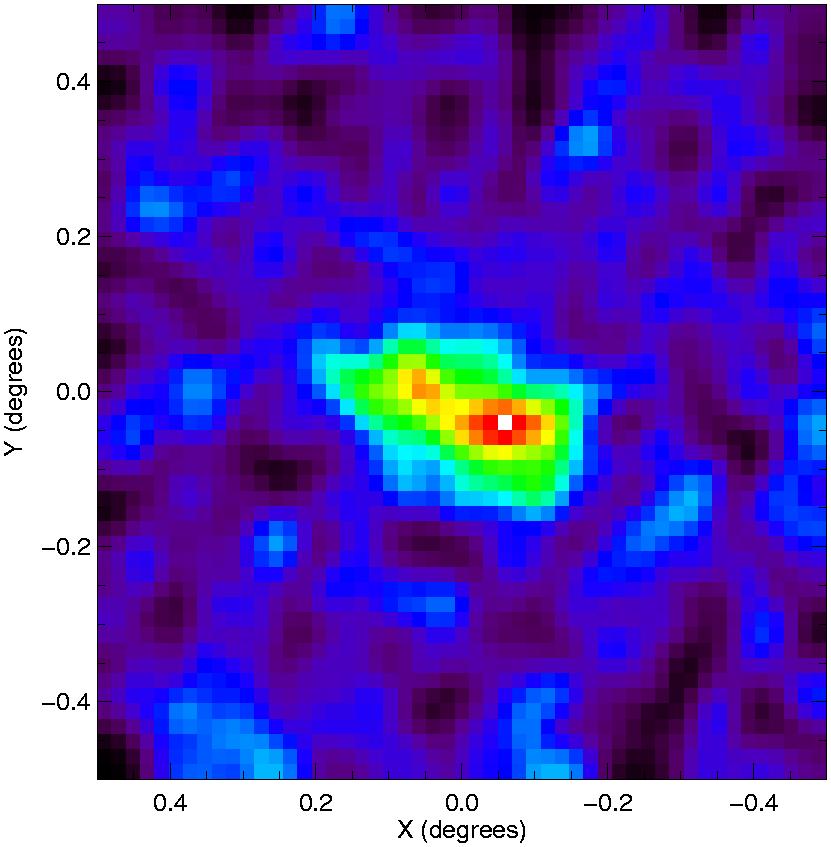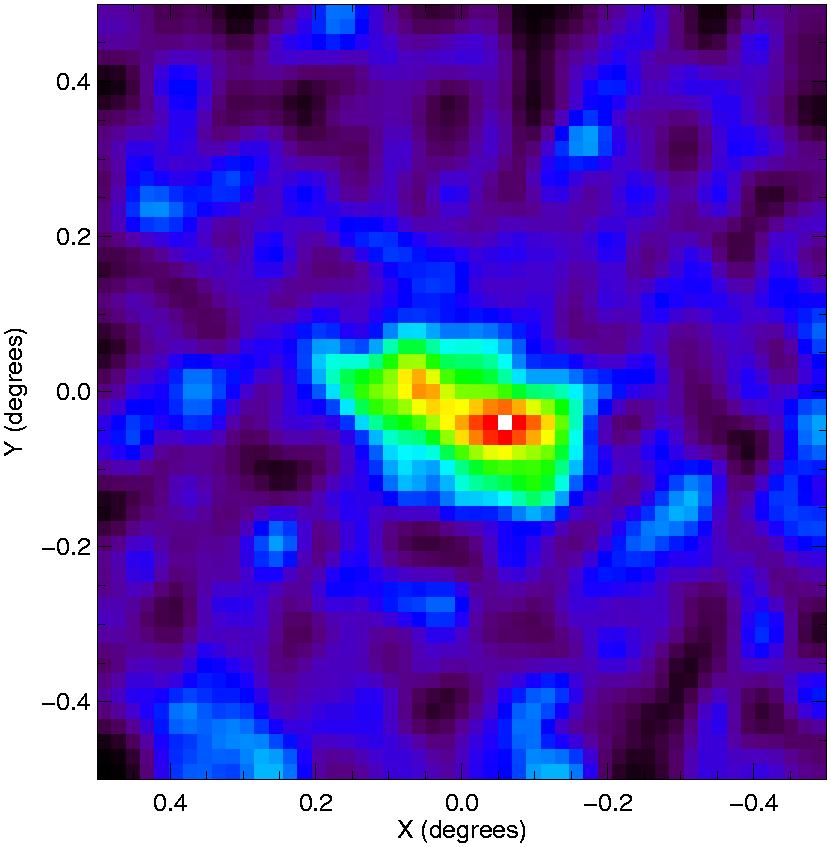







| BOOKS | F. A. Q. | ARTICLES | TALKS | ABOUT KEN | DONATE | BEYOND OUR KEN |
|---|
By Ken Croswell
April 19, 2006

 Images by Daniel Zucker et al./Institute of Astronomy, Cambridge.
Images by Daniel Zucker et al./Institute of Astronomy, Cambridge.
Astronomers in Europe and America have discovered two new galaxies orbiting the Milky Way. One, in the constellation Bo÷tes, is the least luminous galaxy ever seen. The other, in Canes Venatici, lies at the fringe of the Milky Way's empire of satellites.
Both galaxies may help resolve the "missing satellite" problem. Scientists believe giant galaxies, like the Milky Way, formed long ago when dwarf galaxies smashed together. However, this theory predicts the Milky Way should have hundreds of dwarf satellites--but astronomers have found only about a dozen.
Now Daniel Zucker and Vasily Belokurov of the University of Cambridge and their colleagues have spotted two new satellite galaxies. By analyzing data from the Sloan Digital Sky Survey, the astronomers noticed an excess of stars in Bo÷tes and Canes Venatici. Both constellations neighbor Ursa Major, where last year astronomers discovered another satellite galaxy orbiting the Milky Way.
 The first false-color image here shows the Bo÷tes dwarf.
The colors indicate how concentrated or spread out the galaxy's
stars are from one another. White and red mark regions of the
galaxy that have the densest concentrations of stars, while
yellow and green denote areas of the galaxy where the stars are
more spread out from one another.
The first false-color image here shows the Bo÷tes dwarf.
The colors indicate how concentrated or spread out the galaxy's
stars are from one another. White and red mark regions of the
galaxy that have the densest concentrations of stars, while
yellow and green denote areas of the galaxy where the stars are
more spread out from one another.
The second false-color image shows the Canes Venatici dwarf. It uses the same color scheme.
The astronomers say the Bo÷tes dwarf is about 200,000 light-years from Earth, a bit farther than the Magellanic Clouds, the Milky Way's two brightest satellite galaxies. The Canes Venatici dwarf is more remote, located at a distance of 730,000 light-years. That's comparable to the distance of the Milky Way's two most distant satellite galaxies, Leo I and Leo II.
The Bo÷tes dwarf is the least luminous galaxy astronomers have ever seen. Its absolute magnitude is -5.7, so it emits only about a third as much light as Rigel, a star in Orion. Rigel, the most luminous star within a thousand light-years of Earth, has an absolute magnitude of -6.8.
Prior to this discovery, the least luminous galaxy ever seen was the Ursa Major dwarf. Its absolute magnitude is -6.75, comparable to Rigel's.
Both the Bo÷tes and Canes Venatici galaxies are classified as dwarf spheroidals--gas-poor galaxies whose stars are spread out from one another. The colors and brightnesses of their stars resemble those in ancient globular clusters, suggesting the new galaxies are also ancient.
Both galaxies have low metallicities: their abundance of heavy elements such as oxygen and iron is only about 1 percent that of the Sun (see data table below).
 Small galaxies are usually metal-poor, because stars create
heavy elements, and small galaxies don't have enough stars to
manufacture many metals. Furthermore, if a star explodes in a
small galaxy, the galaxy's gravity is so weak that it can't hold
on to the elements the explosion forges. Instead, they sail out
of the galaxy and into intergalactic space.
Small galaxies are usually metal-poor, because stars create
heavy elements, and small galaxies don't have enough stars to
manufacture many metals. Furthermore, if a star explodes in a
small galaxy, the galaxy's gravity is so weak that it can't hold
on to the elements the explosion forges. Instead, they sail out
of the galaxy and into intergalactic space.
In describing the Canes Venatici dwarf, Zucker and his colleagues write, "The discovery of such a faint galaxy in proximity to the Milky Way strongly suggests that more such objects remain to be found." If enough of these satellites exist, they could resolve the "missing satellite" problem.
The astronomers have submitted the Bo÷tes and Canes Venatici papers to Astrophysical Journal Letters.
Ken Croswell earned his Ph.D. in astronomy from Harvard University for his study of the Milky Way Galaxy. He is the author of books about the Milky Way, The Alchemy of the Heavens, and cosmology, The Universe at Midnight, as well as Magnificent Universe.
"Ken Croswell's The Alchemy of the Heavens is one of the very best popular astronomy books in decades."--Keay Davidson, San Francisco Examiner. See all reviews of The Alchemy of the Heavens here.
"The Universe at Midnight is vastly entertaining and enjoyable, as well as informative."--Sir Patrick Moore, New Scientist. See all reviews of The Universe at Midnight here.
"Magnificent Universe by Ken Croswell is elegant and eloquent."--Kathy Sawyer, Washington Post. See all reviews of Magnificent Universe here.
| Bo÷tes | Canes Venatici
| Distance (light-years) | 200,000 | 730,000
| Half-light Diameter* (light-years) | 1,400 | 3,600
| Absolute Visual Magnitude | -5.7 | -7.9
| Apparent Visual Magnitude | +13.3 | +13.9
| Metallicity ([Fe/H]) | -2.3 | -2.0
| Metallicity (Sun = 1) | 0.005 | 0.01
| Right Ascension (2000) | 14:00:00 | 13:28:03.5
| Declination (2000) | +14:30:00 | +33:33:21
| |
*The half-light diameter is the diameter inside which the galaxy emits half its total light.
| BOOKS | F. A. Q. | ARTICLES | TALKS | ABOUT KEN | DONATE | BEYOND OUR KEN |
|---|